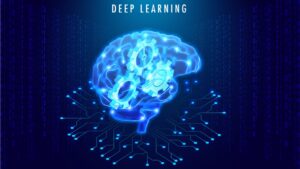What is AI-powered Cybersecurity?
Introduction
AI-powered cybersecurity integrates artificial intelligence technologies into cybersecurity measures, enhancing the ability to detect, respond to, and mitigate cyber threats. As cyber threats become increasingly sophisticated, traditional cybersecurity approaches often fall short. AI brings automation, speed, and accuracy to the forefront of cybersecurity operations, providing a robust defense mechanism.
The Role of AI in Cybersecurity
Threat Detection
AI algorithms can identify patterns and anomalies in vast datasets, which are indicative of potential security breaches. Machine learning (ML) models, a subset of AI, are trained on historical data to recognize unusual activities that might signify a threat.
Behavioral Analysis
By monitoring the normal behavior of systems and users, AI can detect deviations that suggest malicious activities. For example, an AI system might flag an unusual login time or an attempt to access sensitive data from an unauthorized location.
Predictive Analytics
AI uses predictive analytics to forecast potential threats before they occur. This involves analyzing trends and patterns from past data to predict future attacks, allowing organizations to take proactive measures.
Automated Response
AI can automate the response to detected threats, reducing the time taken to mitigate potential damages. Automated response systems can isolate affected systems, block malicious IP addresses, and even roll back changes made by malware.
Incident Response
In the event of a security incident, AI systems can initiate predefined response protocols. This rapid reaction helps contain the threat and minimize its impact.
Adaptive Security Measures
AI enables adaptive security, where the defense mechanisms evolve based on the nature of the threat. This dynamic approach ensures that security measures are always up-to-date with the latest threat intelligence.
Key Technologies in AI-Powered Cybersecurity
Machine Learning
Machine learning models are trained using large datasets to recognize and respond to cyber threats. These models continuously learn and adapt, improving their accuracy and effectiveness over time.

Supervised Learning
In supervised learning, ML models are trained on labeled datasets where the input-output pairs are known. This helps in identifying specific types of threats and applying the correct response.
Unsupervised Learning
Unsupervised learning involves training ML models on unlabeled data. This approach is useful for discovering hidden patterns and anomalies that could indicate new or unknown threats.
Natural Language Processing (NLP)
NLP allows AI systems to understand and analyze human language, enabling the detection of phishing emails, malicious links, and other text-based threats. By analyzing the content and context of communications, NLP can identify suspicious activities.
Deep Learning
Deep learning, a subset of machine learning, uses neural networks with many layers to analyze complex data. This technology is particularly effective in image and voice recognition, which can be used to detect unauthorized access and fraudulent activities.

Benefits of AI-Powered Cybersecurity
Enhanced Accuracy
AI systems reduce false positives and negatives by accurately distinguishing between normal and malicious activities. This precision helps in focusing on real threats rather than chasing false alarms.
Speed and Efficiency
AI can process vast amounts of data in real-time, allowing for swift detection and response to threats. This speed is crucial in mitigating the impact of cyber attacks.
Scalability
AI-powered cybersecurity solutions can scale with the growth of an organization. As the volume of data and the complexity of threats increase, AI systems can handle the load without compromising performance.
Challenges and Considerations
Data Privacy
The use of AI in cybersecurity requires access to large datasets, which may include sensitive information. Therefore, ensuring data privacy and compliance with regulations is crucial. Additionally, organizations must implement stringent data protection measures to safeguard sensitive information.
Moreover, adherence to regulatory requirements not only protects privacy but also builds trust with stakeholders. Consequently, a robust approach to data privacy and compliance will support the effective deployment of AI in cybersecurity while mitigating potential risks.
Sophistication of Attacks
As AI improves cybersecurity measures, cybercriminals also adopt AI to enhance their attacks. Staying ahead of these evolving threats is an ongoing challenge.
Implementation Costs
Future of AI in Cybersecurity
Integration with Other Technologies
AI will increasingly integrate with other emerging technologies like blockchain and IoT to create more robust cybersecurity frameworks. Moreover, this convergence will provide comprehensive security solutions.
Continuous Learning and Adaptation
Future AI systems will be more autonomous, capable of continuous learning and adaptation without human intervention. This self-improvement will ensure that cybersecurity measures remain effective against evolving threats.

Conclusion
AI-powered cybersecurity represents a paradigm shift in how organizations protect their digital assets. By leveraging AI’s capabilities in threat detection, automated response, and adaptive security, organizations can significantly enhance their cybersecurity posture. However, it is essential to address challenges such as data privacy and the evolving sophistication of cyber threats to fully realize the potential of AI in cybersecurity.

